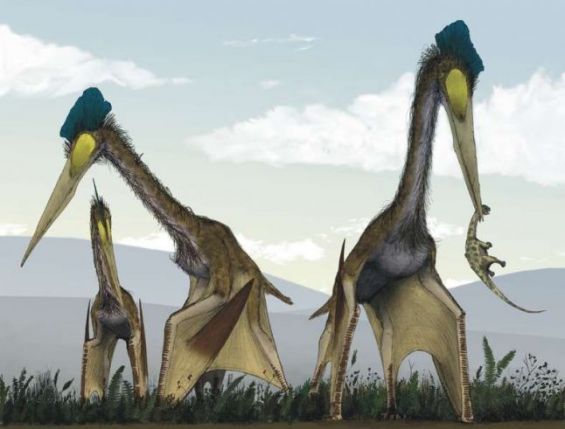Pterosaurs, flying reptiles known as the cousins of dinosaurs were stronger and more diverse by the end of the Cretaceous period than what scientists thought. Fossils found in the north of Morocco have proven that, revealing groundbreaking details about the species.
According to an article issued Tuesday by Associated Press, researchers from the Bath and Portsmouth universities in England found that the bones discovered in Morocco belong to different and distinct types of the flying reptiles. The discovery is, indeed, considered as a turning point in the history of these creatures.

Based on previous researches, scientists believed in the past that these species were going extinct way before the termination of dinosaurs, which occured 66 million years ago. However, the new study conducted by the two universities and made public by the journal PLOS Biology suggests that the fossils found in the Kingdom belong to the Cretaceous period, which ended with the most famous mass extinction in history.
Larger and stronger flying reptiles
Moreover, the same survey indicates that the bones discovered in the region belonged to several different families of Pterosaurs. It explains that there is a «huge diversity» at the point of these species extinctions adding that they were still evolving and going strong at the time.
Commenting on that, Professor David Martill, from the University of Portsmouth told the news agency that «exciting discoveries are being made all the time, and sometimes, just the smallest of bones can radically change our perception of the history of life on Earth».
For Martill, the discovery of these fossils was enough to change how scientists were looking at the extinction of Pterosaurs. Due to the lack of fossils from the era, researchers used to believe that flying reptiles were slowly going extinct and that by the Cretaceous Geologic time period they were already few of them left.
 Cast made from the complete skull and skeleton of a pterodon found in Bavaria, Germany. (Smithsonian / NMNH Paleobiology)
Cast made from the complete skull and skeleton of a pterodon found in Bavaria, Germany. (Smithsonian / NMNH Paleobiology)
This was explained by Dr Nick Longrich, from the University of Bath who told the same source that : «To be able to grow so large and still be able to fly, pterosaurs evolved incredibly lightweight skeletons, with the bones reduced to thin-walled, hollow tubes like the frame a carbon-fibre racing bike. But, unfortunately, that means these bones are fragile, and so almost none survive as fossils.»
Pterosaurs’ fossils were found in marine rocks from phosphate in northern Morocco, dating back to 66 million years ago. They are the latest species of their kind that lived on earth during the last phase of the Cretaceous period.
Dr Brian Andres, research associate at the University of Texas at Austin, also a co-author of the study, told AP concluding that : «The Moroccan fossils tell the last chapter of the pterosaurs’ story – and they tell us pterosaurs dominated the skies over the land and sea, as they had for the previous 150 million years.»





 chargement...
chargement...













